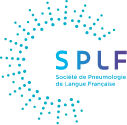Ventilation non invasive à domicile chez des patients BPCO sévères hypercapniques (étude SOMNOVENT’) - 06/11/20
Non-invasive home ventilation in patients with severe hypercapnic chronic obstructive pulmonary disease: The SOMNOVENT' study
 , A. Guillien c, F. Claudé a, L. Laurent a, B. Degano d, e
, A. Guillien c, F. Claudé a, L. Laurent a, B. Degano d, eRésumé |
État des connaissances |
La bronchopneumopathie chronique obstructive (BPCO) est une cause majeure de morbi-mortalité notamment en cas d’insuffisance respiratoire chronique hypercapnique. Longtemps débattus, l’indication et les bénéfices de la ventilation non invasive (VNI) ont été récemment prouvés. Même si l’amélioration de la mécanique ventilatoire et la gestion de la distension dynamique semblent expliquer l’effet positif de la VNI dans la BPCO, peu d’études se sont intéressées aux algorithmes ventilatoires.
Méthodes |
L’objectif principal de l’étude est d’analyser l’impact d’algorithmes ventilatoires spécifiques de la société Löwenstein, censés permettre une meilleure prise en charge de la distension dynamique et de ses conséquences sur l’hématose. Il s’agit d’une étude interventionnelle en soins courants, prospective, en simple aveugle, randomisée avec cross over. Le critère de jugement principal est la pression transcutanée du CO2 nocturne moyenne. Les critères de jugement secondaires sont : les événements respiratoires complexes, la qualité du sommeil et la tolérance de la ventilation évaluée par deux auto-questionnaires et par polysomnographie.
Résultats attendus |
Les résultats de cette étude permettront de savoir s’il convient d’explorer davantage l’intérêt des modes ventilatoires développés par Löwenstein, dédiés aux patients BPCO hypercapniques, redevables d’une VNI au long cours.
El texto completo de este artículo está disponible en PDF.Summary |
Background |
Chronic obstructive pulmonary disease (COPD) is a major cause of morbidity and mortality, especially in cases of chronic hypercapnic respiratory failure. Following a prolonged debate, the indication and benefits of noninvasive ventilation (NIV) have been recently established. Although improved ventilation and reduction in hyperinflation appear to underlie the positive effect on NIV in COPD, only a few studies have focused on specific ventilatory algorithms for improving PaCO2.
Methods |
The main objective of this study is to analyze the impact of Löwenstein's ventilatory algorithms, supposed to allow a better management of hyperinflation and its consequences on alveolar ventilation and blood gas parameters. This is an interventional study in routine care, prospective, single blind, randomized with cross over. The primary endpoint will be the transcutaneous partial pressure of nocturnal carbon dioxide. Secondary endpoints will be: abnormal respiratory events occurring during nocturnal NIV; the objective quality of sleep via polysomnography; the tolerance of ventilation and the subjective quality of sleep evaluated by auto questionnaires.
Expected results |
The results of this study will clarify whether is it necessary to explore more the impact of the ventilatory modes developed by Löwenstein, dedicated to hypercapnic COPD patients, requiring a long-term NIV.
El texto completo de este artículo está disponible en PDF.Mots clés : BPCO, Ventilation non invasive, Hypercapnie, Capnographie, Distension dynamique pulmonaire
Keywords : Non-invasive ventilation, COPD, Hypercapnia, Hyperinflation, Capnography



